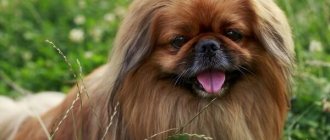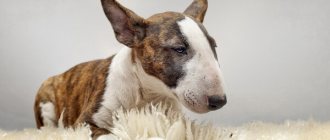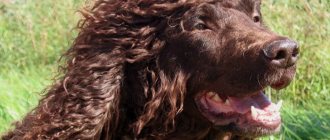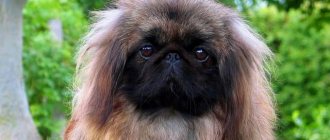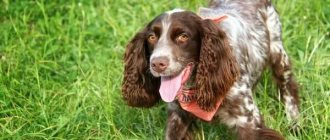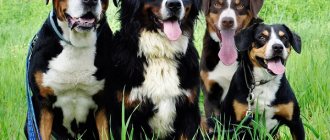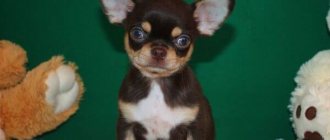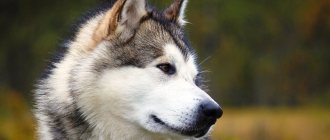Pekingese are one of the most ancient breeds of dogs, which were bred in China about 2 thousand years ago. They are distinguished by their small size, specific appearance and independent but friendly character. To maintain the health of the animal, it is necessary to provide it with proper care and nutrition, since it is demanding in terms of living conditions.
The Pekingese is a little friend with a friendly character.
History of the origin of the Pekingese breed
The name of the breed "Pekingese" comes from the word pekingese - Pekingese. The first mentions of it are found in sources dating back to the 400s. BC.
In particular, during excavations in Ancient China, figurines and various images of small animals with characteristic flattened muzzles and long hair were found.
For 2 thousand years, only members of the imperial family had the right to own a Pekingese. These dogs had a sacred meaning due to their external resemblance to lions, which were revered as a symbol of nobility, strength and prosperity.
This is where the ancient name of the breed comes from – Fu dogs, which in Chinese means “happiness, wealth, prosperity.” Also in China, this breed is called “Shi Tzu Gou” - “lion dog”.
Breeding and selection of Pekingese in Europe began in the second half of the 19th century. Despite the fact that England, France and other countries began trading with China back in the 17th century, the imperial favorites remained inviolable until the British captured the Old Summer Palace, which occurred in 1860.
In addition to numerous riches, the British conquerors brought 5 Pekingese dogs from the Middle Kingdom, which were presented to the royal family.
The unusual appearance of the pets turned out to be so attractive that it was decided to breed them. The decorative breed came to the United States several years later, when the Chinese Empress Cixi gave the dogs to American politicians.
The first Pekingese clubs were founded in England and the USA in 1904 and 1909. respectively. In 1907 and 1912 they officially issued the first standards that described the characteristics of the breed. Although it has since become more squat, its basic features have remained unchanged for decades.
Description of the Pekingese breed
The characteristics of the Pekingese breed are regulated by the standard of the International Canine Association (FCI). Hundreds of years of observations have allowed specialists to create a comprehensive description and limit undesirable selection directions.
Lifespan
The average life expectancy of Chinese breed pets is 13 years. In the absence of congenital defects, good care and timely preventive examinations, this period can be increased to 16–17 years.
In dwarf dogs, due to developmental characteristics, life is shortened by 2–3 years.
Pekingese varieties (photo)
Dog handlers associations recognize only 2 varieties of the breed: standard and dwarf (sleeve). Dwarf individuals are not bred separately, but are born as a result of the matching of the corresponding genes in the parents. The largest and smallest individuals that do not meet the standard do not participate in further selection.
Despite the strict rules for assessing appearance, the canine standard allows for almost any color of Pekingese, except for liver (chocolate) and albino. Decorative pets can be black, sandy, fawn, white, red and gray.
The coat is plain, with tan marks or contrasting spots. Some individuals have a dark “mask” on their muzzle. Two-tone color (paticolor) is considered acceptable only if the spots on the coat are evenly distributed.
Along with the long-haired variety of Pekingese, recognized as the standard, there is also an unofficial one - smooth-haired. For some owners, short-haired dogs are more attractive, despite the impossibility of their participation in exhibitions and breeding.
Unscrupulous breeders also advertise “royal”, “imperial” and other subspecies of the breed. Their purpose is to enhance the attractiveness of the puppies and, in some cases, to explain breeding traits.
Pekingese varieties
Breed group
Pekingese belong to the decorative, or indoor-decorative, group of breeds. The FCI classification distinguishes more categories. According to it, this breed belongs to the group of “companion dogs and toy breeds.”
The distinctive features of such dogs are low aggression, focus on human contact and high emotionality. Decorative pets are not suitable for hunting or service, but they do an excellent job as companions.
Pekingese puppy cost
It depends on several factors:
- place of purchase (be it a nursery, private breeder) and its reputation;
- presence of pedigree and title of parents;
- health conditions;
- age, vaccinations and veterinary passport;
- rarity of color;
- class.
A pet-class puppy, which is suitable as a pet, but not for exhibitions and breeding, costs 8–15 thousand rubles.
A breed-class dog allowed for participation in breeding will cost no less than 15–30 thousand rubles.
The most expensive are show-class puppies, which have a good pedigree and can participate in exhibitions and selection. To purchase such a pet, you will have to pay at least 30 thousand rubles, and if the parents are champions of national and international exhibitions, more than 60 thousand rubles.
Feeding
For high-quality nutrition for your pet, it is necessary to create all the conditions. What is the optimal diet? Dog lovers advise enriching their diet:
- vitamins (fresh vegetables, fruits);
- proteins;
- carbohydrates and fats in minimal quantities.
There should always be a bowl of water. Puppies can be given milk for drinking, but try to switch to fermented milk products due to an allergy to lactose.
Holistic feeds that focus on natural ingredients are considered effective. Foods from the “premium” and “premium-lux” groups help in the development and growth of your pet. Optimally 2-3 feedings per day.
You can feed cheaply, but remember that such food is completely artificial. The Pekingese eats a lot, but remains hungry. Such species negatively affect the quality of wool and general well-being.
Exterior of the Pekingese breed
The canine standard describes the following requirements for the exterior of Pekingese:
- general appearance - a compact, well-balanced dog, moderately stocky, with self-esteem and an attentive expression;
- the head is quite large, more proportional in width than in depth;
- skull – moderate width, wide and flat between the ears, wide between the eyes, does not resemble a dome;
- muzzle – pronounced, with a strong jaw, black pigmentation of the lips and nose, eye rims;
- eyes – round, dark, small, clear;
- ears – close to the skull, no longer than the bottom line of the muzzle, heart-shaped, with long hair;
- neck – thick and short;
- body – short, with a flat topline and a pronounced waist;
- chest – wide, lowered between the forelimbs, with a pronounced bend of the ribs;
- the forelimbs are short, thick, with massive bones, the shoulders are directed back and blend smoothly into the body, the elbows are close to the body, the wrists are strong, the paws are large, flat and can be slightly turned out;
- hind limbs - lighter than the forelimbs, but well developed and strong, knees are pronounced, joints are low and strong, metatarsals are parallel, paws are flat, large, directed forward;
- tail – adjacent to the body, set high and slightly curved over the back in any direction;
- the coat is of moderate length, with a thick undercoat on the body and a shoulder-length mane that forms a collar;
- areas of elongated hair (combs) - on the ears, back of the legs, paws and tail;
- weight - for males from 3.2 to 5 kg, for females - from 3.6 to 5.4 kg (due to the massive, heavy bones, the dog is small but heavy);
- height at the withers – for a male 15–22 cm, for a female – 17–25 cm.
The Pekingese's gait is majestic and slightly swaying. Movement should not be slowed down by weak limbs, joint problems or too long coat.
Pekingese males have an additional requirement: their testicles must be of normal size and located in the scrotum.
Dog breed specimens must meet certain requirements.
Characteristics of the Pekingese
In addition to their attractive appearance, these decorative dogs are distinguished by their high intelligence and independent character. It is important to consider that their behavior is largely determined by the consistency and rigor of training.
Character and behavior
Pekingese have a calm, independent and somewhat arrogant disposition. Dog handlers note that most representatives of this breed behave aloof, although they favorably accept signs of attention from humans. A distinctive feature of Pekingese dogs is also fearlessness, which, however, does not turn into irrepressible cockiness and aggression.
Young animals are quite active and noisy, but rarely howl or bark for a long time in the absence of the owner in the house. Despite their aloofness, they quickly and strongly become attached to people. They tolerate being kept in a small apartment easier than large active dogs, but long separation from the owner should not be allowed.
Dog intelligence
Their stubbornness, selfishness and arrogance, but not low intelligence, can interfere with the upbringing of Pekingese. This breed is distinguished by its lively mind, which allows it to quickly master basic commands.
The flip side of this positive trait is the tendency to manipulate. These pets are able to quickly find weaknesses in the owner and sabotage training.
Education and training
Pekingese training should begin as soon as possible after being handed over to the owner. The most violent conflicts and attempts to override the owner most often occur at 4–6 months, when the puppy becomes a teenager.
The main task of the owner in this case is to achieve the dog’s submission and establish strict prohibitions. Otherwise, the pet will realize its dominant position in the hierarchy and it will be almost impossible to achieve obedience from it.
Pekingese training should be consistent and regular. Under no circumstances should you suddenly change the rules of behavior, use physical violence, or engage in occasional activities.
You need to train your pet in a calm, friendly environment, without shouting or excessive emotionality. Positive results are reinforced with reward or praise.
Despite their small size, these decorative dogs are not recommended for novice dog owners due to their stubborn nature and difficulties in training.
Attitude towards children
The Pekingese's attitude towards children ranges from indifferent to lenient. In some cases, a pet may be jealous of its owner towards other family members or family members towards strangers. With proper upbringing, this does not lead to aggression and conflicts between the dog and others.
Despite this, representatives of this breed are not the best choice for a family with a child, especially a small one. They are too fragile, sensitive to pain and impatient to calmly endure the unceremonious attitude of children.
Dogs of this breed do not have a loyal character.
Compatibility with other animals
Despite their jealousy and selfishness, Pekingese are capable of socialization and coexistence with other animals. Most often, good relationships with other pets develop if they do not annoy the dog or try to dominate it.
It is a bad idea to bring a male Pekingese into the company of other dogs, especially larger ones. Even if a representative of a large breed is friendly and non-confrontational, a decorative dog, due to its character traits, will definitely pose a challenge, which can lead to a fight and injuries.
Character
The ancient Chinese ancestors of the Pekingese had only one purpose - to be next to their royal owners or to bask on their laps. Today's Pekingese do not break traditions and still bask in the hands of their owners.
From the outside it seems that the dog with the lion's mane gets great pleasure from his own irresistibility and greatness. These small decorative dogs have the dignity and pride of kings and developed intelligence.
The Pekingese will not tolerate rudeness or raising his voice in his direction. Also, such a dog is very jealous and will not share the attention of its owners with other pets. The Pekingese can be a wonderful companion and friend for anyone, even if that person has no experience with dogs. Just before buying a Pekingese, keep in mind that the dog loves to bark for a long time and loudly. He also snores and sneezes frequently. You can’t expect silence in a house with such an animal.
Pekingese have the following character traits: intractability, stubbornness, possessiveness, selfishness, gluttony, laziness. Based on this, Pekingese do not have a good relationship with small children. The decorative dog behaves warily with strangers, showing its superiority with all its appearance.
Maintenance and care of Pekingese
The health and activity of ornamental pets depend on their diet and care.
Hygiene and grooming
Pekingese care involves regular grooming - various hygienic and aesthetic procedures for the animal's skin, fur and claws. Grooming is not standard practice, although particularly long coats may be shortened before shows and during hot periods.
It is necessary to brush your dog daily, regardless of the season.
The procedure is carried out in the following order:
- Spray the fur with a product that makes combing easier.
- Using a special massage brush, the dog is combed first along the coat and then against it. This allows you to remove dead undercoat hairs.
- Replace the brush with a long-toothed comb, and then comb the entire length of the coat again.
- Sprinkle the hair roots with baby powder or safe, fragrance-free talcum powder. After 15–20 minutes, comb them again with a comb.
Particular care should be taken to comb the areas behind the ears, under the limbs and on the neck. During periods of shedding, you can remove excess hair with a slightly damp sponge.
Coat change begins at 6 months. After this, the pet should shed no more than 2 times a year: in autumn and spring. Constant heavy shedding of hair indicates a lack of vitamins or health problems.
Frequently bathing Pekingese is not recommended.
Water with detergents destroys the natural protective barrier and deteriorates the quality of wool. To protect your pet from rain and slush, you must wear a water-repellent overall.
Teeth and eye examinations should be performed daily. To avoid plaque buildup, it is recommended that you regularly give your dog chewable treats or use dog toothpastes. If tartar occurs, you should contact a veterinarian-dentist.
The eyes are examined for dirt and suppuration. Dirt is removed using a cotton swab or disk soaked in a solution of chlorhexidine, sodium chloride or boric acid. In case of suppuration, you need to contact a veterinarian.
Antiseptics are also useful for treating the folds near the nose. Without regular cleaning, dirt and tear fluid collect in it, which can become an impetus for the development of infection.
Your pet's ears should be examined at least 2 times a week. Excess sulfur is removed using a cotton swab and a special product from a veterinary pharmacy. Discharge of pus, redness, unpleasant odor and severe anxiety of the animal during treatment are signals to contact a veterinarian.
Due to low activity, the claws of decorative dogs do not have time to wear off on the asphalt, so they must be regularly shortened with a nail clipper. The claw must be trimmed so as not to touch the pulp.
Sleeping area
The Pekingese must have a separate sleeping place. Allowing them to rest in their owner's bed is unacceptable. Plastic houses, soft blankets or special pieces of furniture for dogs are suitable as beds. Closed houses with insulated walls will be too hot for long-haired pets.
It is recommended to place the resting place within reach of the owner. It should be located away from drafts and heating devices.
Activity mode
For exercise and toileting, it is enough for Pekingese to walk for 15–30 minutes twice a day. If the animal is toilet trained at home, then on the coldest and rainiest days you can refuse walks.
During the hot season, they need to be moved to early morning and late evening, as these dogs do not tolerate heat well.
Despite their small size, it is better not to let Pekingese off a leash when walking.
Feeding and diet
You can feed your ornamental pet both natural food and an industrial composition.
The best industrial feeds include:
- Grandorf;
- Eukanuba;
- Acana;
- Bosch;
- Orijen et al.
When choosing food, it is important to pay attention to the quantity and content of animal protein sources, the balance of proteins and fats, the absence of allergens and artificial flavors.
The Pekingese's natural diet should include:
- lean meat;
- offal;
- vegetables (except legumes and corn);
- sea fish;
- porridge (except semolina);
- dairy products;
- greens and fruits.
The recommended proportion of meat and offal is 50–70%, porridge – 15–25%, vegetables – 15–25%, added fats – up to 1%.
Sweets, baked goods, bones, semi-finished products, fatty meats, canned food and caffeine-containing products are prohibited from being given to your pet.
For water and food, it is recommended to buy stainless steel bowls of small and medium depth.
Dog food must be correct and nutritious.
Sample menu for the week
| Day of the week | Morning feeding | Evening feeding |
| Monday | Kefir (yogurt) + cottage cheese | Meat + stewed pumpkin + buckwheat porridge + flaxseed (olive oil) |
| Tuesday | Natural yogurt + cottage cheese + grated apple | Boiled liver + boiled carrots + vegetable oil |
| Wednesday | Ryazhenka (kefir)+cottage cheese | Meat + stewed zucchini + linseed (olive) oil |
| Thursday | Natural yogurt + cottage cheese + mashed banana | Boiled beef heart + boiled pumpkin + rice porridge |
| Friday | Kefir + cottage cheese + raw grated carrots | Boiled boneless fish + boiled carrots or zucchini + vegetable oil |
| Saturday | Natural yogurt + cottage cheese + grated apple | Meat + baked pumpkin + oatmeal + olive oil |
| Sunday | Kefir + cottage cheese + mashed banana | Boiled liver + boiled carrots + buckwheat porridge |
Mating and breeding of Pekingese
Only dogs of show and breeding classes that are physically and mentally healthy are allowed to participate in breeding. Puberty occurs in males of this breed at 6–7 months, and in females at 6–11 months.
It is recommended to breed a pet no earlier than 10–12 months. If the bitch comes into heat earlier, then this period can be adjusted to avoid too long a break between puberty and childbirth.
There are several important nuances in breeding Pekingese:
- with a long break between the first heat and mating, the bitch may not give birth on her own due to the compaction of the pelvic girdle;
- Cryptorchid (males with 1 or 2 undescended testicles) are not allowed for breeding, but in some cases descent occurs late, at 10–12 months;
- To avoid problems during childbirth, the female must be larger than the male.
Pekingese health and diseases
Due to their structural characteristics and genetics, Pekingese often develop the following diseases:
- cataract;
- distichiasis;
- dermatitis;
- inversion, inversion of the eyelid;
- conjunctivitis, keratitis;
- lens displacement;
- atrophy of the lacrimal duct and retina;
- dental hypoplasia;
- hemolytic anemia;
- hypothyroidism;
- dystrophy of intervertebral discs;
- inguinal and umbilical hernias.
Older pets can develop respiratory and heart failure, but most often Pekingese suffer from eye problems, which are common in all flat-faced (brachycephalic) animals.
Owner reviews
“Our Pekingese is a threat to the entire yard, he can attack a large dog, but he is affectionate and friendly towards people. He treats children well, but only when they pet him or play with him, but he does not tolerate insults - he growls and can bite, although more for show. Our dog has a good immune system, so he rarely gets sick, except for a slight inflammation of his eyes that he had once. There are no problems with nutrition, except for the fact that he is a terrible beggar: he loves to beg for goodies, standing on his hind legs, and he eats more willingly from his hands than from a bowl.”
“We bought our pet with documents, but the dog still turned out to be quite problematic. She has already had conjunctivitis three times, and due to the peculiarities of her bite, she has to grind her food, since she cannot chew large pieces. She is generally picky when it comes to food: she only eats what she wants. In addition, her fur has to be combed every day, and if this is not done on time, it becomes crumpled and tangled.”
“By the time we got our Pekingese dog, there was already a cat living in the house. The dog turned out to be very smart and obedient, did not annoy the cat, and did not pay attention to him at all. She didn’t spoil things, used the litter box to go to the toilet, ate natural food, and, in general, didn’t cause any trouble. But, unfortunately, we did not foresee that it would not be the dog who would be jealous, but the cat, who had already lived in the house for many years and whom we could not part with, and therefore we had to give our Dolly to our relatives.”
“Our dog was given to us by friends: they gave birth to a Pekingese puppy and one puppy remained unsold, so he ended up in our house. From the very beginning we liked the dog and we all loved her and tried to take good care of her. True, we have small problems with feeding: the pet will not eat everything, and she also loves bagels, although it is probably wrong to give them to her. Now that the dog is no longer young, she has health problems. However, despite this, she is still for us the best dog in the world, with whom we will never part.”
“Our Pekingese loves to walk outside and loves to roll in the snow. In mud or slush, you have to put on overalls on him, since he has a habit of stomping right through puddles. He treats children normally, or rather, indifferently, but only when they themselves do not touch him. Caring for him is not too difficult, except for the fact that he has to comb his coat every day and take him to a grooming salon for a haircut in the spring. By nature, the dog is quite temperamental and a little jealous, he loves when people fuss with him and pay attention to him, but at the same time he can be affectionate and even playful, but this, of course, depends on his mood.”
How to choose a puppy
You should buy a puppy from an officially registered nursery or from a breeder with good recommendations. During the selection process, it is advisable to examine several litters at once from different sellers: this will allow you to more accurately assess the dog’s appearance and behavior.
The future pet meets the following criteria:
- treated for worms and fleas, vaccinated according to age, has a veterinary passport;
- behaves actively, but does not show aggression;
- stands firmly on its paws, does not limp or drag its limbs;
- has eyes and ears clear of secretions, shiny smooth fur, and a slightly raised tail;
- over 8 weeks.
A dog's appearance is predicted based on the characteristics of the parents and genetic line.
Buying a show-class puppy is only possible from six months of age. Until 6 months, breed traits do not appear so clearly that they can be guaranteed to correspond to the declared characteristics.
Conscientious breeders, upon purchase, enter into an agreement in which the responsibility of the parties is fixed and the possibility of returning the puppy within a specified period.
It is better to purchase puppies from nurseries.
Pros and cons of the Pekingese breed
The advantages of the breed are the following aspects:
- calm behavior;
- no need for long walks;
- the ability to live in a small apartment;
- attractive appearance;
- high intelligence;
- devotion, attachment to the owner;
- courage;
- Possibility of toilet training at home.
Difficulties in keeping Pekingese are due to their shortcomings:
- the need to care for long hair;
- low activity, tendency to gain weight;
- soreness in old age;
- high demands on conditions and nutrition;
- stubborn, strong-willed character, prone to jealousy towards other people and animals.
If there is no training, the dog can show aggression and is at risk of injury and poisoning when walking.
Interesting facts about the breed
There is a lot of interesting information about the Pekingese breed.
The most notable facts are:
- They arrived in the Netherlands, Germany and the USA at the same time, despite their earlier spread in Europe.
- When analyzing the DNA of Pekingese dogs, scientists determined that they are close relatives of pugs, papillons and chihuahuas.
- In ancient China, imperial dogs were breastfed and buried with their owner.
In China, the Pekingese is considered a symbol of good luck and prosperity. To attract wealth, the Chinese place small figurines of these animals in their homes.
Nutritional Features
Do not forget that Pekingese dogs are decorative pets. Therefore, they need a special diet. The Pekingese's diet should be balanced and dietary, because excess weight contributes to the development of diseases of the digestive tract and respiratory organs in the animal.
You can create a diet from both special dry food and natural products. If you adhere to a natural diet, it is worth remembering some rules. Frequently changing the diet will not be beneficial for your pet. The amount of protein food should be twice as much as vegetable food.
Do not add too much salt to food, and also do not give your pet too hot food. It is forbidden to give your Pekingese fatty, smoked food, or sugar. Potatoes and beans are also not recommended.
